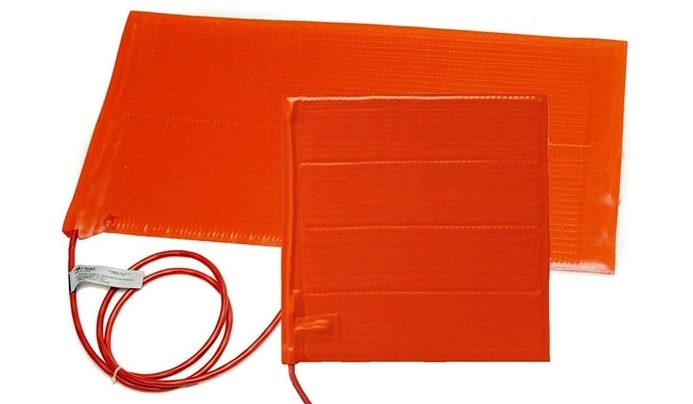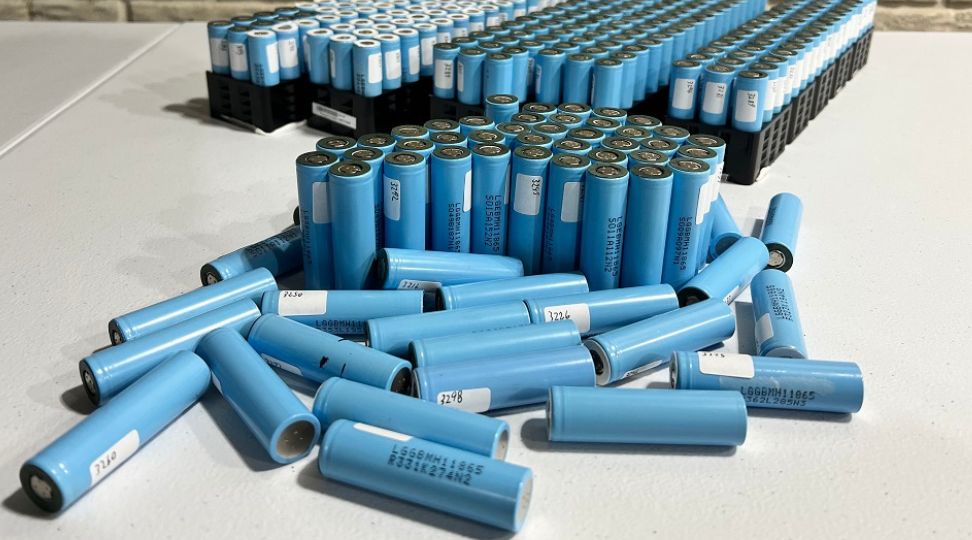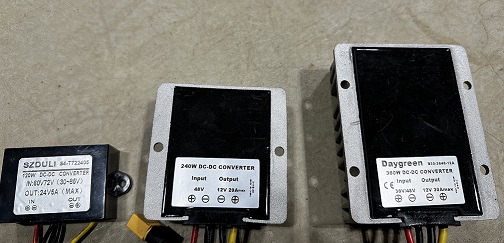
How To Keep Batteries Warm
Table of Contents
To keep batteries warm, especially in cold temperatures, several methods can be employed, ranging from passive to active solutions. Simple and effective passive solutions include insulation, battery blankets, and heated enclosures. Insulating materials, such as foam or specially designed battery blankets, help to reduce heat loss and maintain a stable temperature by creating a barrier around the battery. Heated enclosures, powered by electricity or other energy sources, trap heat and provide a warm environment for the battery. Charge maintenance and avoiding overloading are also crucial strategies, as they help the battery withstand cold temperatures by ensuring it remains adequately charged and does not exceed its maximum capacity or voltage rating.
For more precise temperature control, active thermal conditioning systems can be integrated with batteries. These systems often use heating elements controlled by a microcontroller, such as an Arduino, to maintain a steady operating temperature. By connecting temperature sensors and heating elements to the Arduino, the system can monitor the battery's temperature and adjust the heating element accordingly. This setup ensures consistent temperature regulation, protecting the battery from extreme cold and enhancing its performance and lifespan. Passive solutions like insulation may be sufficient for many applications, but active methods provide more reliable temperature control in harsher conditions.
Why Keep Lithium Batteries Warm?
Lithium-ion batteries, including LiFePO4 batteries, have a limited temperature range in which they can operate safely and efficiently. Cold temperatures can cause a reduction in the battery's performance and capacity, as well as increase the risk of damage or failure. In general, the optimal operating temperature range for lithium-ion batteries is between about 20 and 25 degrees Celsius.
When a lithium-ion battery is at cold temperatures, the electrolyte inside the battery becomes more viscous and the chemical reactions inside the battery slow down, which can lead to overcharging and potentially dangerous thermal runaway. Charging a LiFePO4 battery in temperatures below 0°C can cause damage to the battery, reducing its capacity and lifetime.
How To Identify And Fix A Broken Battery? Check out our other articles for more details.
How Is Temperature Related To Performance?
Lithium-ion battery performance depends on temperature. Different cell types have different temperature ranges for charging and discharging. Charging ranges are narrower and require more stringent temperature control than discharging ranges.
The temperature also affects the charging current: lower temperatures result in lower charging currents and longer charging times. The temperature also affects the available battery capacity, causing a decrease in capacity as the temperature drops. This reduction can reach over 35% within the temperature range allowed by the manufacturer, and some technologies may experience a reduction of over 50% in this range.
Battery operation in temperatures that are too low or too high will result in faster degradation and reduced performance. It is recommended that batteries be operated in conditions as close to 20-25°C as possible. To help mitigate these issues, passive or active thermal conditioning systems can be integrated with the batteries to regulate their temperature.
These systems can provide heating, cooling, or both, and can utilize a variety of methods, such as heated or cooled air, ventilation with ambient air, or liquid heating and cooling. In addition to protecting the batteries from overheating or overcooling, these systems aim to maintain a consistent temperature throughout the battery pack. This is important because cells operating at different temperatures have different operating specifications, and this difference can lead to faster wear and reduced functionality of the battery pack.
How Do You Protect Batteries From The Cold?
How to Protect Batteries from Cold Weather: Effective Strategies
Protecting batteries from cold weather is essential for maintaining their performance and longevity. Here are several effective methods, ranging from simple insulation to advanced heating solutions:
Insulation
Wrapping the battery in insulating materials like foam or specialized battery blankets helps reduce heat loss and maintain a stable temperature. This insulation creates a thermal barrier around the battery, trapping heat and preventing it from escaping into the environment.
Battery Blankets
Battery blankets are specifically designed insulating covers that fit snugly around the battery. These blankets help maintain a consistent temperature, keeping the battery warm and reducing the risk of failure. Available in various sizes and shapes to fit different battery types, battery blankets are durable, flexible, and easy to install.
Heated Enclosures
Heated enclosures provide an advanced solution by keeping the battery warm through integrated heating elements. These enclosures act as barriers against the cold, trapping heat and maintaining a stable temperature. Powered by electricity or other energy sources, heated enclosures come in various sizes and shapes to accommodate different battery types.
Charge Maintenance
Maintaining an adequate charge level before exposing the battery to cold temperatures reduces the risk of over-discharging, which can damage the battery and shorten its lifespan. Keeping the battery properly charged enhances its ability to withstand cold conditions and ensures reliable performance. Is It Better To Store Lithium Batteries Charged or Uncharged? Check out our other articles for more details.
Avoid Overloading
Overloading a battery in cold conditions can degrade its performance and increase the risk of failure. To protect the battery, avoid exceeding its maximum capacity or voltage rating. This precaution helps ensure the battery remains reliable and effective even in low temperatures.
By implementing these strategies, you can effectively protect your batteries from cold weather, ensuring they remain efficient and durable.
What's The Easiest Way To Keep Batteries Warm?
Insulation is a highly effective and straightforward method to maintain stable temperatures for batteries, particularly in low-temperature environments. Proper insulation reduces heat loss, keeping the battery warm and functional. This can be achieved through various means, such as wrapping the battery in insulating materials like foam, using specially designed battery blankets, or placing the battery inside insulated enclosures.
Battery Blankets: A Superior Insulation Solution
A battery blanket is a specially designed insulating cover that fits securely over the battery, ensuring consistent temperature maintenance and protection from extreme weather changes. These blankets are crafted from high-quality insulating materials that act as barriers between the battery and the external environment, significantly reducing heat transfer.
Benefits of Using Battery Blankets
- Temperature Regulation: Battery blankets help maintain the battery at an optimal temperature, which is crucial for performance and longevity.
- Enhanced Performance: By keeping the battery warm, battery blankets ensure efficient operation even in harsh weather conditions.
- Extended Battery Life: Consistent temperature maintenance prevents the battery from experiencing stress due to extreme temperature fluctuations, thereby prolonging its lifespan.
Implementing insulation solutions like battery blankets can significantly improve your battery's performance and durability, ensuring reliable operation regardless of environmental conditions.
[[ aff type=aff ~ link=https://batteryhookup.com/discount/CS5?redirect=/collections/accessories/products/24-48v-150w-battery-heating-pad-hi-heat-made-in-usa ~ title=`24/48v 150w Battery Heating Pad` ~ image=https://admin.cellsaviors.com/storage/24-48v-battery-heating-pad.jpeg ~ description=`These are usually very expensive but here you can get them for $6. They were all removed from working battery packs that did not need them and are in working condition.` ~ height=small ~ buttonText=`Check it out!` ]]
How To Build A Battery Temperature Stabilization System
It's easier than you may think to add a heating element that is integrated into the battery or its enclosure. This allows for more precise temperature control, as the heating element is in direct contact with the battery. The heating element can be controlled by a microcontroller such as an Arduino. The Arduino can be programmed to monitor the temperature of the battery using temperature sensors, and adjust the heating element accordingly to maintain a steady operating temperature.
An overview of controlling a heating element with an Arduino while monitoring temperature sensors would include the following steps:
- Connect a temperature sensor (such as a thermistor) to the Arduino.
- Connect the heating element to the Arduino, typically via a MOSFET or relay.
- Write a program for the Arduino to read the temperature sensor and compare it to a set point temperature.
- If the temperature is below the set point, the program turns on the heating element to raise the temperature.
- If the temperature is above the set point, the program turns off the heating element to maintain the temperature.
- Repeat steps 3 through 5 continuously in a loop to monitor and maintain the temperature.
Be sure to add a delay at the end of the loop to prevent continual oscillation of the heating element.
Conclusion
Maintaining battery warmth in cold weather is crucial for optimal performance, longevity, and safety. Passive solutions like foam insulation, battery blankets, and heated enclosures provide effective protection by reducing heat loss and maintaining stable temperatures. Advanced methods, such as active thermal conditioning systems controlled by microcontrollers like Arduino, offer precise temperature regulation, ensuring consistent performance even in extreme conditions. These strategies are essential for lithium-ion batteries, including LiFePO4 variants, which perform best within a narrow temperature range of 20-25°C and can suffer significant performance and capacity reductions in cold temperatures.
By implementing these methods, you can protect your batteries from the adverse effects of cold weather, extend their lifespan, and maintain reliable operation. Insulating materials and battery blankets offer straightforward solutions, while heated enclosures and active systems provide enhanced control. Maintaining adequate charge levels and avoiding overloading further safeguard battery performance. For comprehensive protection and optimal performance, integrating both passive and active strategies is recommended. Ensure your batteries remain warm and functional, regardless of the environmental conditions, by following these best practices.
We hope this article answered every question you had in regards to how to keep batteries warm. Thanks for reading!


